James L. Franklin
Chicago, Illinois, United States
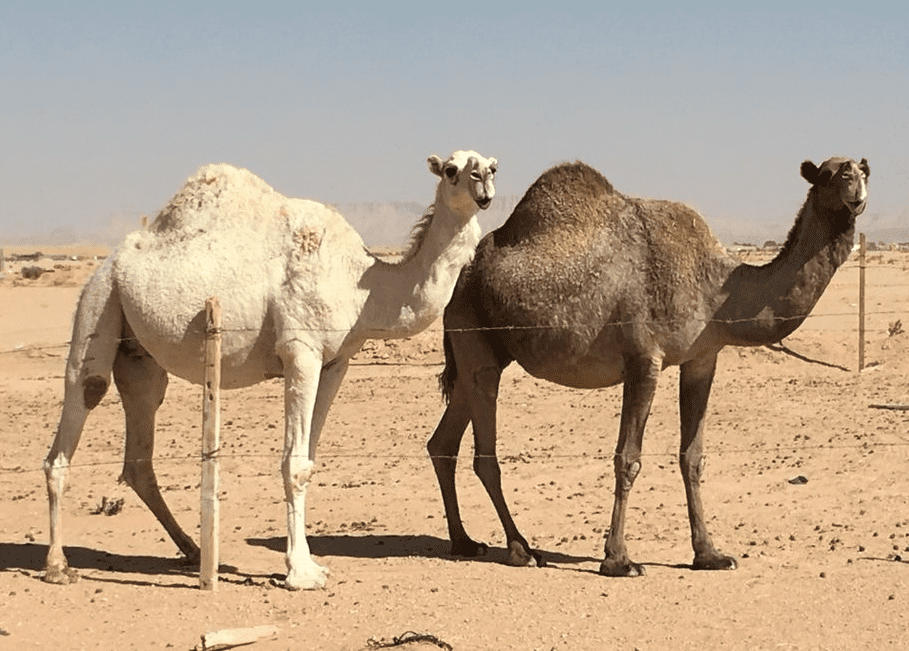
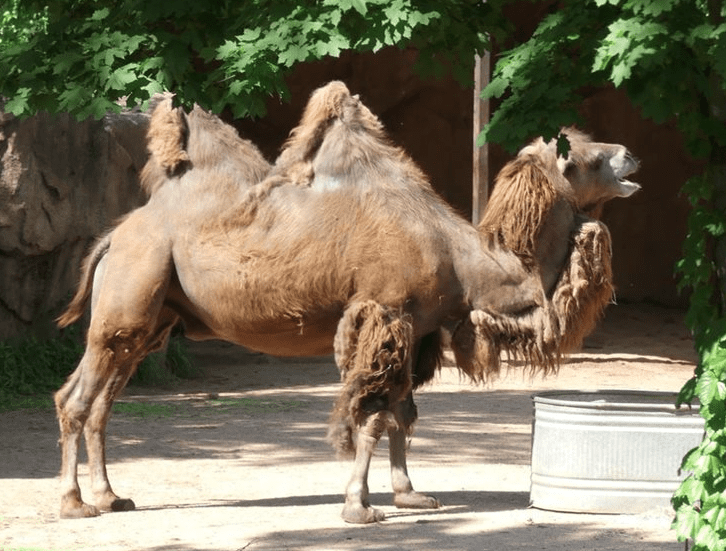
“The camel is a horse designed by a committee.”
This quotation is attributed to Sir Alec Issgonis (1906–1988), a British car designer who worked for the Morris Minor Company and went on to design the Austin Mini. He was knighted in 1969 for the success of his design. His focus was on compactness of size, simplicity, and fuel efficiency. The quotation reveals more about the frustrations of committee work than it does about the camel. As we shall see, Sir Alec’s bon mot does a disservice to the camel.
Let us begin with the basics:
“The Camel” – Ogden Nash
The camel has a single hump;
The dromedary, two;
Or else the other way around.
I’m never sure. Are you?
It really is not as confusing as Nash would have us believe. The one-humped dromedary camels make up 94% of the world’s camel population while the two-humped Bactrian camel the remaining 6%. There remains the wild Bactrian camel (Cameleus ferus), a highly endangered species found in remote areas of northwest China and Mongolia that is genetically distinct from the domestic Bactrian camel.
Our word “camel” comes to us via the Hebrew and Phoenician gāmāl, the Arabic jamala, the Old French camayl or chameil, and Middle English kamel. “Dromedary” is from the Greek dromas kamelos meaning “running camel.” In Latin, dromedarius means a kind of camel and appears in Old French as dromedaire and Middle English as dromodarye. The Bactrian camel owes its name to the region, Bactria, in ancient central Asia lying between the mountain range of the Hindu-Kush and the Oxus River.

If we compare the dromedary and Bactrian camel (Figures 1 & 2),1 it is apparent that beyond the difference in the number of humps, the dromedary camel with its long, slender legs is better suited for running. It is also the taller of the two species: adult males stand at 1.8–2 meters at the shoulder. While the Bactrian camel is shorter with a shoulder height of 1.6–1.8 meters, it is the largest living camel with a body mass that may reach 1000 kg.
The ancestors of the camel have been with us long before the written word and predate the appearance of Homo sapiens. Their earliest known progenitor, the protoylopus, was about the size of a rabbit and inhabited the woodlands of what is now South Dakota 40 to 50 million years ago. The ancestors of our modern camel migrated into Eurasia via Beringia about seven million years ago. They left behind a family of Camelidae that gave rise to the “New World” camalids: the llama, the alpaca, the guanacos, and the vicuña. If one finds this surprising, view a nature program on the animals of South America and the resemblance will be apparent. The recent melting of the permafrost has uncovered archeologic evidence that camels grazed the high arctic during their migration into Asia. Skeletal remains dating back 40,000 years have been recovered, and remains of prehistoric camels have been found in the Sahara Desert and as far as the Atlantic Ocean. These early camels probably went extinct when they encountered local predators such as the ancestors of modern-day lions and leopards. It is not possible to tell from skeletal remains if they had one or two humps. The dromedary camel was reintroduced into Africa only after domestication.2
In his Pulitzer Prize winning Guns, Germs, and Steel, Jared Diamond discusses the domestication of big mammals.3 Defining “big” as over 100 pounds, he identifies “The Ancient Fourteen Species of Big Herbivorous Domestic Mammals.” The “Major Five” include: sheep, goat, cattle, pig, and horse, all domesticated between 8,000 and 4,000 B.C. The Arabian or dromedary camel and the Bactrian camel head the list of Diamond’s “Minor Nine” species, which include their South American cousins, the llama, and the alpaca, all domesticated about 2,500 B.C.
Southern Arabia along the coast of the Red Sea is believed to be the center of camel domestication. Middens (prehistoric refuse dumps) from 3000–2750 B.C. show that the inhabitants in this area ate sea cows (dugongs) and also wild camels. Petroglyphs (prehistoric rock drawings) in central Arabia show camels as game and riding animals (Figure 3). The camel makes an appearance early in the Hebrew Bible. In the book of Genesis, chapter 12, Abram entered Egypt, and his wife, Sarai, for her beauty, was taken into Pharaoh’s palace. Initially Abram tells Pharaoh that Sarai is his sister and we read that “it went well with Abram; he acquired sheep, oxen, asses, male and female slaves, she-asses and camels.”4 These events were thought to have occurred around 1800 B.C.
From the coast of southern Arabia, the domesticated camel spread across the Red Sea to the Horn of Africa and northward through the vast “Empty Quarter” of the Arabian Peninsula into Asia. The spread of the domesticated camel during the second millennium B.C. was linked to the overland incense trade. The Nabateans arose as a powerful trading empire during the fourth century B.C. and monopolized the trading routes, transporting frankincense and myrrh from the northern Arabian Peninsula in what is now Yemen and Oman, across the vast Arabian desert to Petra, and on to Egypt and North Africa. The Nabateans were known camel breeders and capitalized on the camel’s ability to carry large loads while requiring little water or feed as they traversed vast distances across the desert. Long caravans of camels were common and saddles and saddlebags appear on Nabatean coins, all of which gave them an edge in the fierce competition for trade.5 Monumental evidence of their presence can be found today in Jordan at Petra and in Saudi Arabia at Al Madinah (Figures 4 & 5).
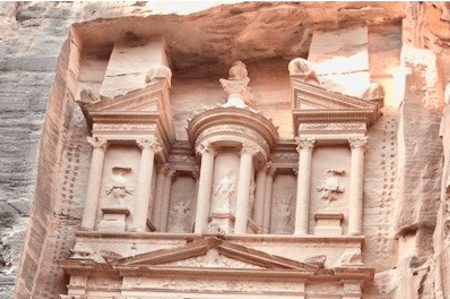
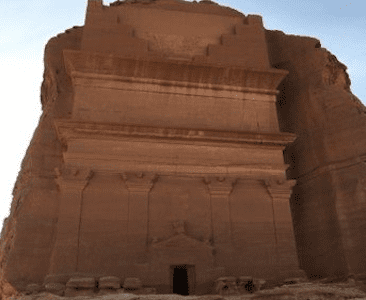
Successful domestication of wild animals requires a suite of traits that Diamond believes to be essential. A species must efficiently turn food into consumable biomass, grow quickly, breed in captivity, have a mild disposition, not easily panic, and tolerate living in herds. The wild camel presented an opportunity that with some exceptions fit these criteria. Breeding in captivity presented particular problems to which we shall return. By the time man turned to domesticating the camel, it was well adapted to survival in the hot, arid desert climate.
These adaptations have been the subject of much interest and study. Frequently noted is the camel’s ability to sustain long periods without drinking water. The Roman naturalist Pliny the Elder pointed to its hump, assuming it to be a reservoir for water which the animal could draw upon in time of need. The hump in fact is a reservoir of fatty tissue and a source of energy when metabolized. In 1801, the English zoologist George Shaw suggested the presence of an internal reservoir known to Oriental travelers who would resort to killing a camel when desperate to obtain water. Tales like these inspired the physiologist Knut Schmidt-Nielsen’s pioneering research on the adaptive physiology of the camel. In 1954–55, he and his colleagues established a research station in Beni-Abbés in southern Algeria. An account of his studies can be found in The Camel’s Nose: Memoirs of a Curious Scientist. His findings were a catalyst to much of the accumulated knowledge on this subject.6
Appreciating the camel’s marvelous adaptation to desert life begins with an inspection of some external anatomical features. The camel’s larger size in comparison to smaller desert animals requires less food and water relative to body mass. Size also plays a role in heat regulation; a greater body mass heats up more slowly than a smaller mass. It is for these reasons that smaller desert animals spend much of the day hidden from the sun’s rays in underground burrows. The dromedary’s long, thin legs allow the animal to stand between 1.8 and 2 meters tall at the shoulder, raising its body significantly above the superheated desert sand (up to 70°C) and also permits the circulation of wind to have a cooling effect. The camel has a thick tissue over the sternum called a pedestal, which in the recumbent position keeps the body off the hot sand.
Arabs have long appreciated the excellent insulating properties of camel hair. The camel sheds much of its wool during the summer but retains a layer several inches thick on its back, shielding it from the sun. Schmidt-Nielsen while conducting his field studies noted that Arabs typically dress in several layers of loose clothing, frequently made of wool. The “summer coat” of dromedary camels becomes lighter in color and is effective in reflecting the sun’s rays.
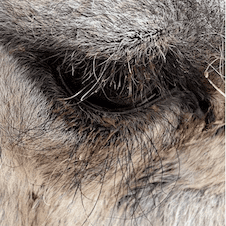

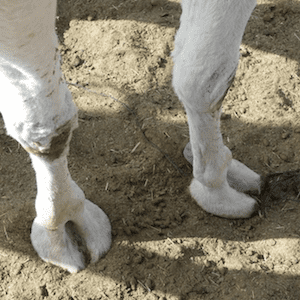
Looking the camel in the face, one observes a double set of eyelashes to prevent sand from entering the eyes. The dromedary is able to voluntarily close its nostrils, offering protection during sandstorms. The upper lip is split, helping in selecting food, and a thick, leathery lining of the mouth allows the camel to chew thorny desert plants (Figures 6 & 7). The camel’s tall height and long, thin neck helps him to reach vegetation in trees.
Camels belong to a clade of even-toed ungulates that include cattle, pigs, giraffes, sheep, deer, and hippopotamuses. The foot of the camel is well suited to the loose, sandy soils of the desert. The foot acts like a large plate that maintains contact with the ground throughout the stride (Figure 8). The camel is often called “the ship of the desert.” The meaning of this metaphor has two explanations. First, that the animal travels across vast distances of uncharted desert. The second refers to a peculiar aspect of the camel’s gait. The front and hind legs on each side rise and fall at the same time, creating a rotary motion that evokes the pitch and roll of a ship upon the waves.
The most interesting physiologic adaptations pertain to the camel’s ability to regulate its body temperature and conserve water. Camels tolerate temperatures that range throughout the day from 30–40°C (86–104°F) and are known to travel for ten to fifteen days without water. Schmidt-Nielsen found that a camel can tolerate the loss of 25% of its body weight through dehydration. By contrast, when exposed to the heat of the desert, the loss of less than 12% of a man’s body weight can result in cardiovascular collapse and death. Camels also have the remarkable ability to quickly repair their water deficit by drinking ten to twelve liters per minute. The camel also preserves its circulating blood volume in the face of dehydration aided by the unique ovoid shape of its red blood cells, which circulate more freely than the disk-shaped red blood cells of other mammals.
Camels, like most desert mammals, are adapted to conserving water. Anatomically their kidneys have a proportionately thicker medullary-to-cortical ratio. The medullary region contains the collecting tubules responsible for concentrating the urine. They excrete urine with a concentration of salt almost twice that of sea water. Their urine during periods of dehydration attains the consistency of syrup. Along with other ruminants (cattle, sheep, goats, giraffes, and antelopes), camels excrete very little urea in their urine. Urea, which is a product of protein metabolism, enters the rumen of their gut from their saliva and from their circulatory system. Urea is then broken down by bacterial urease in the stomach, allowing the nitrogen to be absorbed and recycled for protein synthesis. The gastrointestinal tract is likewise very efficient in retaining fluid and the camel produces very dry fecal material.
In the face of dehydration, the camel is able to store heat and conserve water by not sweating. In the predawn hours, the camel’s body temperature might fall to 34°C (93°F) and rise to 40.7°C (105°F) at the end of the day. This remarkable fluctuation in body temperature without sweating conserves about five liters of water in a 500 kg animal.7 A human tolerates only a two-degree fluctuation in body temperature in this environment and loses water by sweating throughout the day. The brain of the dromedary camel is selectively protected from the high body temperature by means of a countercurrent complex of arteries and veins at the base of the skull and in close proximity to the nasal cavity known as the rete mirabile (Latin meaning “wonderful net”). The rete mirabile is not unique to the camel and is found in large desert ungulates such as the eland, gemsbok, hartebeest, and wildebeest in southern Africa.8
The sexual life of the camel
Is stranger than anyone thinks.
He has spent years in the desert
Trying to seduce the Sphinx.
But the Sphinx’s organs of pleasure
Are buried deep down in the Nile
Which accounts for the hump on the camel
And the sphinx’s inscrutable smile.9
Camels reach sexual maturity by three to five years of age. They are atypical seasonal breeders. The mating season occurs once a year and lasts three to five months. “The reproductive cycle of the camel is governed by the male rutting period of two to three-months duration.” It is not known what triggers the rut but it always takes place during the rainy season and best grazing season and therefore varies geographically. Given a twelve-to-thirteen-month gestation period, mating and calving coincide. Camels give birth to a single large calf with a mean weight of 37 kg that is fully mobile by the end of the first day. Copulation has rarely been observed in the wild but well described in captivity. Female camels (referred to as cows) generally become pregnant every two years.10 The fertility rate of camels compared with other domestic animals is low: in one study only 43%. There are a number of research centers in the United Arab Emirates dedicated to the study of camel reproductive biology and improving “breeding efficiency.”
Unlike most domesticated animals, the ovaries of female camels only release a mature egg after they have mated. There is a search to understand the factors that trigger ovulation and an “ovulatory-stimulation factor.” Research is hampered by the fact that female camels resent and vigorously resist by kicking or biting invasive techniques such as transvaginal ultrasound or rectal palpation used to detect the readiness of ovaries to ovulate.11
Modern anthropological studies view domestication as occurring in many forms. Richard W. Bulliett points out that camels may be “milked, ridden, loaded with baggage, harnessed to a plow, eaten, traded for goods or made into sandals or into camel hair coats.” Camel riding or harnessing the camel to a cart or plow implies an advanced stage of domestication. During the nineteenth century and through the First World War, camel corps were part of European armies and the United States Army. Camel milk continues to be a staple food of nomadic tribes living in deserts. Camel hair is durable and suitable for the manufacture of warm clothes and blankets.
“Beauty is bought by judgement of the eye.”
— William Shakespeare, Love’s Labour’s Lost, Act II, Scene 1.1588
Throughout the Arabian Peninsula, camel breeding for both racing and beauty has become a multimillion-dollar industry. Animal husbandry has produced many individual breeds of the dromedary. Let us ignore Sir Alec Issgonis’s slur that the camel is a horse designed by a committee and remember that “Beauty is in the eye of the beholder.”12 Annual camel beauty contests occur in both Saudi Arabia and the United Arab Emirates, offering millions of dollars in prize money. The King Abdul Aziz Camel Festival is an annual Bedouin event held in the desert northeast of Riyadh and is now in its seventh year. It is expected to host over 33,000 camel owners who will compete for 66 million dollars in cash prizes. Camels are judged on the shape and size of the lips, the shape and size of the head, the length of the neck, and the position of the hump. In addition to beauty, camel racing is a much-loved sport in the Middle East and dates back to pre-Islamic times. The Prophet Mohammed’s companions were believed to have raced camels. Camels bred for racing are known as thauls in Arabic. Even as modernity transforms the Middle East, the future of the camel still seems assured.
End Notes
- The photographs in this article are from the author’s personal collection.
- Richard W. Bulliet, The Camel and the Wheel, Columbia University Press, 1990, Chapter 2 “The Origin of Camel Domestication.”
- Jared Diamond, Guns, Germs, and Steel: The Fates of Human Societies, W.W. Norton and Company, 1997, pp. 158-163.
- The Jewish Study Bible, Tanakh Translation, Editors Adele Berlin and Marc Zvi Brettler, Oxford University Press, 2004, Genesis, Chapter 12, verse 17, p. 31.
- Dan Gibson, The Nabataeans: Builders of Petra, CanBooks, 2003, p. 230.
- Knut Schmidt-Nielsen, The Camel’s Nose: Memoirs of a Curious Scientist, Inland Press/Shearwater Books, 1998.
- Knut Schmidt-Nielsen, The Physiology of the Camel, Scientific American, 291 (6): 140-151, 1959.
- Barry Lovegrove, The Living Desert, Fernwood Press, 1993.
- The editor-in-chief of the Hektoen International Journal, George Dunea, M.D., has kindly provided this anonymous limerick.
- Hilde Gauthier-Pilters and Anne Innis Dagg, The Camel: Its Evolution, Ecology, Behavior and Relationship to Man, The University of Chicago Press, 1981, p. 90-94.
- Gail Vines, Winning Streak for Sheiks, New Scientist, December 1962, p. 22-25.
- The modern form of this quote is to be found in the 1878 novel Molly Brown by Margaret Wolfe Hungerford. It is an old axiom, and well said, that “beauty is in the eye of the beholder.”
JAMES L. FRANKLIN, M.D., is a gastroenterologist and associate professor emeritus at Rush University Medical Center. He also serves on the editorial board of Hektoen International and as the president of Hektoen’s Society of Medical History & Humanities.
Highlighted in Frontispiece Volume 15, Issue 1 – Winter 2023

Leave a Reply